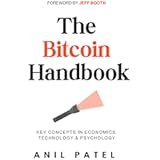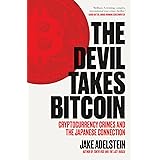Many aspiring traders encounter a frustrating dilemma: the pursuit of financial independence through the markets often begins with a costly period of trial and error. Navigating the complex world of investments, especially day trading, can feel like wandering through a maze filled with conflicting advice and overwhelming information. This initial confusion frequently leads to significant monetary losses and eventual disillusionment, despite the undeniable potential for substantial income generation. Fortunately, a structured and disciplined approach, as outlined in the accompanying video, offers a clear pathway to establishing a robust foundation for success in day trading.
The journey to becoming a proficient day trader is not merely about finding the “right” strategy; it is fundamentally about cultivating the correct mindset and adhering to a systematic process. This article aims to elaborate on the crucial principles introduced in the video, providing a deeper understanding of how to approach day trading as a strategic endeavor rather than an emotional gamble. By focusing on mental discipline, essential tools, market dynamics, risk management, and consistent practice, a beginner can systematically build the skills necessary to navigate the markets effectively and move towards consistent profitability.
Cultivating the Trader’s Mindset: Probability and Emotional Discipline
One of the most critical distinctions between successful and unsuccessful traders lies in their psychological approach to the market. A professional trader understands that individual outcomes are inherently uncertain; every single trade is a mere coin flip in the grand scheme of statistical probability. As demonstrated in the video, if a strategy yields $300 on a ‘heads’ outcome and incurs $100 on a ‘tails’ outcome, over a series of ten flips, one would statistically expect five of each, resulting in a net gain of $1,000. This example vividly illustrates that focusing on the outcome of a single trade can be highly misleading.
Emotional detachment from individual trade results is therefore paramount. A losing trade, when executed according to a predefined, statistically validated strategy, is still considered a “good” trade. Conversely, a winning trade that deviates from one’s disciplined approach and involves excessive risk is, by definition, a “bad” trade, regardless of the profit generated. This perspective allows a trader to withstand inevitable drawdowns without succumbing to fear or greed, which are notorious for derailing even the most promising careers. It is asserted that individuals who grasp this fundamental principle are immediately ahead of 80% of other traders who typically begin their journey with an emotional and outcome-oriented mindset.
Overcoming “Paralysis by Over-Analysis”
A common pitfall for new traders is the tendency to overcomplicate their charting setup with numerous indicators, a phenomenon aptly termed “paralysis by over-analysis.” While advanced indicators can certainly complement a refined strategy, they are often misused by beginners in an attempt to “fix” a fundamentally flawed or nonexistent basic approach. This typically leads to confusion and hinders genuine market understanding.
It is strongly advised that one begins with an exceptionally clean and simple chart, focusing solely on price action represented by candlesticks. The true movement of markets is driven by the immutable forces of supply and demand, not by complex overlays. Success is generally achieved by first understanding these core mechanics and only then, with a proven foundational strategy, progressively introducing supplementary tools to enhance what already works. This disciplined progression prevents overwhelming oneself and facilitates a clearer comprehension of market behavior.
Essential Tools for the Aspiring Day Trader
To embark on a day trading journey, a few foundational software tools are indispensable. These platforms provide the necessary environment for market analysis, trade execution, and performance tracking. The video specifically highlights three key components that should be integrated into every beginner’s workflow.
Firstly, **TradingView** is presented as the primary charting platform. It offers a comprehensive suite of tools for technical analysis, allowing traders to visualize price movements and apply various analytical techniques. Its versatility and extensive features make it a standard choice across different financial markets, although beginners are encouraged to keep their initial setup minimalistic to avoid unnecessary complexity. The availability of real-time data and customizable charts makes it an invaluable asset for market observation.
Secondly, a reliable spreadsheet application, such as **Microsoft Excel or Google Sheets**, is essential for meticulous trade journaling. This tool is vital for recording trade details, tracking performance metrics, and analyzing one’s trading patterns over time. The systematic logging of entries, exits, profits, losses, and observations forms the bedrock of continuous improvement and strategy refinement. Without such detailed record-keeping, it becomes exceedingly difficult to objectively assess performance or identify areas for adjustment.
Finally, an **exchange platform** is required for the actual buying and selling of assets. While the speaker personally utilizes Bybit or Femex for cryptocurrency trading due to the 24/7 market access and high leverage options, the choice of exchange ultimately depends on the specific assets being traded (e.g., Forex, stocks, commodities). The critical aspect is merely having a reliable and regulated means to execute trades. The selection of an exchange is a decision that can be deferred until one has developed proficiency with charting and strategy development in a simulated environment.
Decoding Market Movements: Supply, Demand, and Candlesticks
At the heart of all market movement is the continuous interaction between buyers and sellers, which manifests as shifts in supply and demand. Understanding this fundamental dynamic, along with how it is visually represented on a chart, is crucial for predicting potential price changes. Candlesticks, a standard charting tool, offer a concise visual summary of price action within specific timeframes, such as a 5-minute interval.
Each candlestick provides four critical pieces of information: the opening price, the closing price, the highest price reached (high wick), and the lowest price reached (low wick) during that period. For instance, a green (or white) candle typically indicates that the closing price was higher than the opening price, signifying net buying pressure, while a red (or black) candle indicates the opposite. These simple visual cues are the building blocks of technical analysis, allowing traders to quickly gauge market sentiment and momentum.
Beyond candlesticks, the underlying forces of supply and demand are directly observable through the order book and volume. The order book displays the current bids (buy orders) and asks (sell orders) at various price levels, indicating where potential demand and supply are concentrated. Volume, representing the quantity of assets traded within a given period, provides insight into the strength of these buying and selling pressures. High volume accompanying a price move suggests stronger conviction behind that move.
It is essential to recognize that a trading chart is, in essence, a visual representation of mass human psychology, encompassing the collective decisions of individual traders, institutional investors, and algorithmic programs. Price fluctuations are a continuous battle between supply and demand. When supply exceeds demand at higher prices, the price will typically retrace. Conversely, when demand overwhelms supply, prices are pushed upwards. The core objective in day trading is to anticipate these imbalances before they fully materialize, allowing a trader to enter positions strategically and capitalize on the subsequent price shifts.
Anticipating Price Movements: Mastering Trend Analysis
One of the most effective methods for predicting potential supply and demand imbalances is through the systematic analysis of market trends. Identifying and understanding trends enables traders to position themselves advantageously, aligning their trades with the prevailing market direction. Trends are not random occurrences; they follow identifiable patterns that can be mapped using simple tools like trend lines.
A confirmed uptrend, for instance, is characterized by a sequence of a low, followed by a high, then a higher low, and subsequently a higher high. This pattern signifies increasing demand as buyers are willing to purchase at progressively elevated prices. Conversely, a downtrend is confirmed by a high, a low, a lower high, and then a lower low, indicating that supply is consistently outweighing demand, pushing prices downward. These foundational patterns are universally applicable across all liquid financial markets.
Trend lines are graphical tools used to connect a series of higher lows in an uptrend or lower highs in a downtrend. These lines serve as dynamic support or resistance levels, indicating areas where price reversals are likely to occur as demand or supply reasserts itself. For example, in an uptrend, a price bounce off a trend line suggests that demand has re-entered the market, potentially offering an entry point for a long position. A break below an uptrend line, however, signals a potential shift in market structure, indicating that the previous demand zone has been breached and a new trend may be emerging.
More advanced trend analysis often incorporates parallel channels, where a second trend line is drawn parallel to the primary one, encompassing the price action between two boundaries. Price movements within such channels can provide predictable trading opportunities, with traders looking to buy at the lower boundary (support) and sell at the upper boundary (resistance). The ability to accurately identify and interpret these trends is a cornerstone of effective day trading, allowing for more informed decision-making and improved probability of successful outcomes.
The Cornerstone of Success: Risk Management in Day Trading
Even with a robust understanding of market dynamics and trend analysis, successful day trading remains unattainable without stringent risk management. The video emphatically states that one of the biggest mistakes a beginner can make is entering trades without a pre-determined stop loss and an appropriate position size. These elements are not merely suggestions; they are non-negotiable pillars of a sustainable trading career.
A **stop loss** is a critical order placed with a broker to sell an asset once it reaches a certain price, thereby limiting potential losses on a trade. This mechanism acts as an essential safeguard against adverse market movements, ensuring that any single ‘tails’ outcome (losing trade) does not disproportionately impact the trading account. The placement of a stop loss should be a calculated decision, based on technical analysis, and never on emotional intuition.
**Position sizing** refers to the number of units or shares of an asset a trader decides to buy or sell for a particular trade. This must be determined by the amount of capital one is willing to risk on that specific trade, typically a small percentage of the total trading capital (e.g., 0.5% to 2%). As illustrated with the Matic and Ethereum example in the video, risking $10 on Matic versus $23,000 theoretically on Ethereum for the same unit count highlights the crucial need for position sizing to be adjusted based on the asset’s price and volatility. A consistent risk per trade, say $50, should dictate the number of units entered, not a random amount.
Moreover, abandoning emotion-based sizing (e.g., “I feel confident about this trade, so I’ll use more size”) is critical. Trading success is built on a systematic approach, where every trade is treated uniformly in terms of risk allocation. This consistency is what allows for the statistical edge to play out over many trades, rather than gambling on individual outcomes. The goal is to maximize the risk-reward ratio, aiming for trades where potential profit (e.g., $150) significantly outweighs potential loss (e.g., $50), even if the win rate is not exceptionally high (e.g., a 30% win rate can be profitable with a 1:3 risk-reward ratio).
Magnifying Capital: Understanding Leverage in Trading
Access to sufficient capital is often perceived as a barrier for new day traders. However, tools like leverage can significantly reduce the initial capital required to participate in the markets, making day trading more accessible. Leverage involves borrowing capital from a broker to increase the size of one’s trading position beyond what could be afforded with one’s own funds. While it amplifies potential gains, it also escalates potential losses if not managed meticulously.
As demonstrated in the video, risking a modest $25 on a Matic trade might necessitate $1,529 in capital without leverage. However, by applying 10x leverage, the required capital for the same position is reduced to $152. This allows traders to take “normal-sized trades” with considerably less personal capital upfront. It is important to note that while the capital requirement is lower, the fees associated with the trade are typically calculated based on the full position size, not just the leveraged portion, which is a consideration for overall profitability.
The key to using leverage responsibly lies in maintaining disciplined risk management. Leverage itself does not inherently increase risk if the position size is calculated based on the fixed dollar amount one is willing to risk per trade, rather than the total notional value of the leveraged position. A trader must still predetermine the stop loss and profit target, ensuring that the potential loss on any given trade remains within acceptable limits. It is strongly advised that beginners gain considerable experience in a simulated trading environment and master their risk management principles before engaging in live trading with leverage.
The Path to Proficiency: Journaling and Practice
The transition from a beginner to a consistently profitable day trader is forged through diligent practice and systematic self-analysis, not just by accumulating theoretical knowledge. As highlighted in the video, rigorous journaling and simulation are indispensable components of this developmental process. These activities provide the proof of concept that a trading strategy is effective before real capital is committed to the market.
Immediately after each trade, whether it results in a profit or a loss, it should be meticulously recorded. A trade journal should include crucial details such as the date of entry, the ticker symbol, whether it was a long (buy) or short (sell) trade, the profit or loss incurred, and any pertinent notes regarding the setup, execution, or emotional state during the trade. This comprehensive log allows a trader to objectively review their decisions, identify recurring patterns, and calculate essential performance metrics like win rate and average risk-reward ratio. Specialized spreadsheets, like the custom one mentioned in the video, can automate these calculations, offering a clear statistical overview of one’s trading performance over time.
Before transitioning to live trading, significant time should be dedicated to practicing strategies in a simulated environment or through backtesting tools. The “bar replay” feature on platforms like TradingView is particularly useful for this. It allows traders to rewind charts to a past date and simulate real-time market conditions, executing trades based on their strategy without risking actual capital. This controlled practice environment enables the refinement of entry and exit points, the testing of various position sizing techniques, and the development of quick decision-making skills under pressure, all while providing invaluable data for the trade journal.
While simulation is crucial for skill development, it is also advised not to linger in “sim accounts” for too long once consistent profitability is demonstrated. Trading with real money introduces a psychological dimension that cannot be fully replicated in practice accounts. The emotional impact of gains and losses in a live environment is significantly different and must be experienced and managed. Therefore, after achieving demonstrable proficiency and consistent results in practice, a measured transition to live trading, starting with small amounts, is a logical next step to solidify one’s capabilities and truly harness the potential of day trading.
Starting Your Day Trading Path: Your Questions Answered
What is the most important thing to focus on when starting day trading?
Beyond just finding a good strategy, it’s crucial to cultivate the correct mindset and follow a systematic process. This involves mental discipline and understanding that each trade is about statistical probability, not emotional gambling.
What basic tools do I need to start day trading?
You’ll need three main tools: TradingView for charting, a spreadsheet (like Excel or Google Sheets) for detailed trade journaling, and an exchange platform to execute your trades.
What are candlesticks and why are they important for day trading?
Candlesticks are visual tools on a chart that show price action within a specific timeframe, indicating the opening, closing, high, and low prices. They help traders quickly understand market sentiment and momentum, which is crucial for analyzing supply and demand.
How can I manage my risk when day trading?
To manage risk, always use a pre-determined stop loss to limit potential losses on a trade. You must also carefully calculate your position size to ensure you only risk a small, consistent percentage of your total capital on each trade.
Should I practice day trading before using real money?
Yes, it is highly recommended to practice your strategies in a simulated environment or through backtesting tools like ‘bar replay.’ This allows you to refine your skills and strategy without risking real capital before transitioning to live trading with small amounts.







